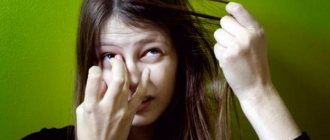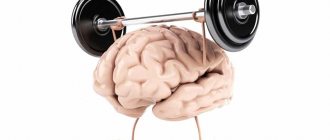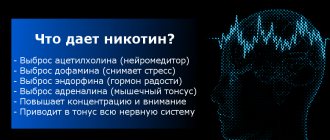Herpes and other infectious diseases can be complicated by inflammation of the facial nerve. Characteristic symptoms of the disease include weakness of facial muscles and facial asymmetry. The severity of the patient's condition depends on the cause of the disease and the area of damage to the nerve fibers. A doctor can quickly make a diagnosis based on external signs, but instrumental and laboratory examinations are necessary to obtain accurate data. Treatment is carried out with the help of drug therapy, physical therapy and surgical interventions.
Disease Information
Facial neuritis is an inflammatory disease of the facial nerve, which is responsible for the contraction of facial muscles. In the medical literature, the pathology is also called Bell's palsy. As a rule, damage to nerve fibers causes unilateral disruption of the facial muscles. Other symptoms include spontaneous contractions of muscle fibers, weakness and decreased sensitivity of the facial skin. Signs of paralysis appear within 24-48 hours after tissue damage. In most cases, doctors are able to cure facial neuritis and restore facial expressions without any complications.
The facial nerve leaves the brain and branches in the facial part of the skull. This anatomical structure transmits electrical impulses from the brain to control facial expressions. The intermediate nerve, which joins the facial nerve fibers, is responsible for carrying sensory information to the brain. With the help of this part of the organ, a person receives sensitive information from the receptors of the skin and subcutaneous tissues of the face. Damage to the nervous system primarily affects the work of the facial muscles, and functions are usually impaired on one side of the face.
Facial neuritis is sometimes called idiopathic facial paralysis, since the exact causes of the disease are unknown. This is a common disease diagnosed in men and women at any age. According to epidemiological data, the pathology occurs at least once in life in 1.5% of the population, and patients with chronic infections aged 15 to 60 years are at risk.
Causes of neuritis of the facial nerve
All possible causes of inflammation of the facial nerve lead to narrowing and spasms of the arteries. Blood stagnates in the capillaries, which causes them to expand. The liquid part of the blood accumulates in the intercellular spaces, the outflow of lymph is disrupted due to swelling of the tissues and compression of the lymphatic vessels and nerves.
Poor blood circulation to a nerve is fraught with a lack of nutrition. The nerve trunk becomes larger, numerous hemorrhages occur , preventing impulses from being transmitted from the brain to the muscles.
The facial nerve becomes inflamed due to several reasons:
- local hypothermia;
- herpes;
- multiple sclerosis;
- depression and frequent stress;
- hypertension;
- alcoholism;
- sinusitis;
- otitis;
- diseases of the endocrine system;
- atherosclerosis.
Inflammation is also : at this time, women face serious hormonal changes and suppressed immunity, which negatively affects the state of the nervous system. During this period, the disease is more difficult to treat, since many drugs are dangerous to the fetus and are prohibited for use.
Why does it occur
The causes of facial neuritis are unknown. Numerous studies have not allowed scientists to determine the exact sources of damage to nerve fibers. It is assumed that the pathology may be a complication of existing neurological and infectious diseases. There is also an idiopathic form of neuritis, in which paralysis can appear against the background of complete clinical well-being. Previously, facial hypothermia was considered the main cause of the disease, but modern data refute the significance of this etiological factor.
Possible reasons:
- Herpes is a viral infection characterized by damage to the skin and mucous membranes. Most often, the disease affects the external genitalia, facial skin and mucous membrane of the eye. Viruses are transmitted primarily through sexual contact. According to research results, during herpes infection of the surface of the lips, viruses penetrate the long processes (axons) of sensory neurons. Pathogens can destroy the myelin sheath.
- Other infectious diseases: rubella, Lyme disease, influenza, Coxsackievirus, cytomegalovirus infections and herpes zoster. The likelihood of disease occurring in the presence of chronic infection depends on the state of the immune system.
- Autoimmune disorders are pathologies in which the immune system begins to attack healthy tissue. Multiple sclerosis and other diseases are characterized by destruction of the myelin sheaths of nerve fibers and severe neurological complications.
- Malignant or benign brain tumor. The pathological formation can compress the nuclei of the facial nerve.
- Ischemic or hemorrhagic stroke is an acute disorder of cerebral circulation in which brain tissue is destroyed.
With secondary Bell's palsy, addressing the underlying cause of the disorder is key to treatment. Chronic neuritis of the facial nerve is usually infectious in nature.
Treatment methods for facial neuritis
There are several important points regarding how to treat facial neuritis. If it is determined that secondary facial neuritis occurs, treatment begins with the underlying disease that caused the pathology of the facial nerves.
- At the initial stage of the disease, it is recommended to take glucocorticosteroids (prednisolone, metipred, dexamethasone). They effectively relieve inflammation.
- In case of severe pain, non-steroidal anti-inflammatory drugs are prescribed (movalis, nimesulide, see the list of all NSAIDs in the article injections for pain or ointments for pain).
- Vasodilators are prescribed because in this disease there is a disruption in nerve nutrition, and this group of drugs improves blood flow. These include aminophylline, trental, agapurin, and vasonite.
- Since when a nerve is inflamed, swelling is observed, which aggravates the condition, it is necessary to use drugs that reduce this swelling. Diuretics (diuretics) include triampur, furosemide and others.
- To improve metabolism in nervous tissue, B vitamins are used in injections (Kombilipen, Neurobion, Unigamma).
- If movement disorders slowly regress, then it is necessary to begin the administration of anticholyesterase drugs that improve the process of neuromuscular impulse transmission, for example, proserin.
Treatment of neuritis is not limited to drugs; many other auxiliary methods are used, including physiotherapy, massage, gymnastics, acupuncture and other non-drug methods.
Physiotherapy in the treatment of facial neuritis
- From the first days of the disease, it is possible to use non-contact thermal procedures such as Solux.
- From the 5th-6th day of the disease, contact thermal procedures can be used, for example, paraffin or ozokerite applications.
- UHF is also used after 5-6 days of illness.
- Ultrasound with hydrocortisone.
- The minimum course of physiotherapy is 8-10 procedures.
Massage and self-massage
Massage for neuritis of the facial nerves can be performed by both a specialist and the patient himself. In the second case, you should know exactly how to do it. Below is a technique for performing self-massage for this disease.
- Place your hands on the areas of your face located in front of the ear. Massage and pull the muscles on the healthy half of the face down, and on the affected side – up.
- Close eyes. Use your fingers to massage the orbicularis oculi muscle. On the healthy side, the movement should go from above, outwards and downwards, and on the affected side, from below up and from the inside outwards.
- Place your index fingers on both sides of your nose. On the healthy side, stroke from top to bottom, and on the affected side, vice versa.
- Use your fingers to smooth out the muscles in the area of the corners of the lips. On the healthy side, from the nasolabial fold to the chin, and on the affected side, from the chin to the nasolabial fold.
- Massage the muscles above the eyebrows in different directions. On the healthy side to the bridge of the nose and down, on the affected side - to the bridge of the nose and up.
Acupuncture
With neuritis of the facial nerve, rehabilitation can be lengthy and often a similar treatment method is used to achieve the fastest possible effect.
Not all doctors are proficient in this method; only a specially trained doctor can perform acupuncture. In this case, sterile thin needles are inserted into certain reflexogenic points on the face, which allow irritation of the nerve fibers. According to numerous studies in Asia and European countries, this method has proven itself to be excellent in the treatment of this pathology.
Physiotherapy
Gymnastics for facial neuritis is done several times a day for 20-30 minutes. It should be done in front of a mirror, concentrating on the work of the facial muscles of the affected side. When performing exercises, it is necessary to hold the muscles on the healthy half of the face with your hand, since otherwise they can “pull” the entire load onto themselves.
A set of exercises for facial neuritis
- Close your eyes tightly for 10-15 seconds.
- Raise your upper eyelids and eyebrows up as much as possible and hold the position for a few seconds.
- Slowly frown your eyebrows and hold this position for a few seconds.
- Try to slowly inflate the wings of your nose.
- Slowly inhale air through your nose, while placing your fingers on the wings of your nose and pressing on them, resisting the air flow.
- Smile as widely as possible, try to make your molars visible when smiling.
- Smile widely with your mouth closed and lips closed, making the sound “i”.
- Place a small walnut behind the cheek on the affected side and try to talk like this.
- Puff out your cheeks and hold your breath for 15 seconds.
- Curl your tongue, cover your lips, and slowly inhale and exhale through your mouth.
- Move your tongue between your cheek and teeth in a circle.
Surgery
If there is no effect within 10 months from the start of conservative treatment, then autotransplantation has to be done. Typically, a nerve is taken from the patient's leg and sutured to the branches of the facial nerve on the healthy side, and the other end is sutured to the muscles on the affected side. Thus, the resulting nerve impulse causes the facial muscles to contract on both sides simultaneously. This treatment method is carried out no later than one year from the onset of the disease. Later, irreversible atrophy of the facial muscles on the affected side occurs.
Treatment with folk remedies
Folk remedies for facial neuritis are not very effective and can lead to worsening of the condition and prolong the disease. Some people use chamomile decoction compresses, dry heat, or rubbing ointments with herbal extracts. All these methods are practically ineffective, so you need to consult a doctor for help.
Risk factors
There may be a hereditary predisposition. Acute neuritis associated with a complicated family history is found in 4% of cases. The disorder may be associated with autosomal dominant gene transmission. The presence of other neurological diseases in close relatives, such as trigeminal neuralgia and multiple sclerosis, increases the patient's risk of developing the disease. Doctors also consider the influence of other conditions and symptoms, including lifestyle factors.
Known risk factors:
- Age. Neuritis is most often diagnosed in patients aged 15 to 60 years. In children, secondary facial paralysis is usually detected.
- Diabetes. Elevated blood glucose levels lead to damage to small vessels that supply nerve fibers.
- Traumatic brain injury. With TBI, damage to the brain matter and deformation of the skull bones with subsequent compression of the facial nerve are possible.
- Pregnancy. Facial paralysis occurs especially often during the last trimester or a week after childbirth.
- Chronic infections of the upper respiratory tract. From the respiratory tract, viruses can spread to neighboring tissues.
- Pre-existing neurological diseases, including multiple sclerosis, ophthalmoplegia and essential tremor.
- Congenital or acquired decreased immunity. Usually we are talking about HIV infection and its complications, which increase the risk of developing a herpetic or cytomegalovirus form of the disease.
Preventive measures aimed at eliminating risk factors are effective for secondary neuralgia.
How to treat facial neuritis with folk remedies
Several remedies that can help with neuritis:
- One glass of clean sand or table salt is well calcined and heated in a frying pan. Pour into a bag made of thick cotton fabric. Apply the bag to the affected area before going to bed for 30 minutes. The contents of the bag should be pleasantly warm. Such warming up has a beneficial effect on the facial muscles. The course is 1 month.
- Pour 4 tablespoons of white acacia into 1 glass of vodka and leave for 1 week. Rub the resulting tincture on the sore side of the face 2 times a day for a month.
- Chop 2 tablespoons of black poplar buds well, then add 2 tablespoons of butter. You will get a kind of fatty mass, similar to an ointment. It should be rubbed into the affected area with gentle movements once a day for 14 days. It is better to do this after the neuritis has warmed up. A very effective product containing resin and essential substances. Thanks to the analgesic and anti-inflammatory effect, positive results are noticeable within a week after the start of rubbing.
Shilajit solution has a good therapeutic effect on diseases. It can be purchased at a pharmacy. Place 1 tsp in a glass of warm milk. honey and 0.2 ml of solution. You need to take this remedy for 2 weeks. You can wipe the problem area with the solution for 5 minutes. Rubbing is done for 1 month. Shilajit strengthens the immune system and helps improve the health of peripheral nerves.
In addition to the main therapy, neuritis can be treated with traditional recipes, but first obtain the consent of the attending physician. Be healthy!
Development mechanism
Cranial nerves have their own nuclei in the brain, consisting of neuron cell bodies. Nerve fibers themselves are long processes of cells that extend from the brain. Some processes transmit sensitive information to the nuclei of the central nervous system, while others respond to muscle contraction. Support cells form an insulating sheath (myelin) around the processes of neurons to quickly conduct electrical impulses. Nerves are very fragile structures that can be damaged by infectious agents, toxins, and physical stress. In addition, if blood flow is disrupted, tissue destruction is possible.
The exact mechanism by which Bell's palsy develops remains a matter of debate. One of the variants of the pathogenesis of the disease is swelling in the area of the facial nerve canal of the temporal bone. In this case, the nerve fibers are compressed, and ischemic changes occur. Swelling can be caused by traumatic brain injury, intracerebral hemorrhage, infection, or an autoimmune disorder.
Brief description of the anatomical structure of facial innervation
Facial expressions are determined by the motor activity of the muscles lying under the skin of a person’s face. Each of them has its own network of nerve endings and blood vessels that provide nutrition and enrichment of tissues with oxygen.
Responsibility for the innervation of the muscles of this area is assigned in the human body to the VII pair of cranial nerves, called facial nerves (nervus facialis). Their location in the head is characterized by symmetry, however, pathological processes can occur on one or both sides.
In its structure, the nervus facialis has an extensive network of nerve endings - structures that cover the innervated area as widely as possible.
Entering the parotid salivary gland from the cranial cavity (through the stylomastoid foramen), the so-called “Crow's Foot” is formed - the division of the main trunk into five smaller branches. They are suitable for:
- Zygomatic bone (temporal branch) - for innervation of the muscles around the eye, fronto-occipital muscle;
- Buccal muscle;
- Mandible (innervates the muscle that lowers the corner of the mouth);
- Neck;
- Stylohyoid and stapedius (participating in the innervation of the eardrum) muscles.
The impact of a stimulus in the area of operation of any of these branches provokes the sending of a signal to the brain and processing of the received information at the reflex level.
In addition, signals entering the corresponding brain structures from the sensory organs (vision, hearing, smell), through neural interactions, activate the delivery of commands to the areas innervated by the nervus facialis.
Classification
The disease is classified according to the cause of its occurrence, localization of inflammation and course of the disease. So, chronic or acute neuritis of the facial nerve is possible. The chronic form is characterized by periodic exacerbations and periods of remission, during which symptoms temporarily disappear. This type of pathology can develop due to improper or untimely treatment. From the point of view of etiology, facial neuritis of traumatic and infectious origin is distinguished. Idiopathic Bell's palsy is the primary form of the disorder, the cause of which cannot be detected through diagnosis.
Classification of facial neuritis by place of origin:
- central, there is weakness of the facial muscles only in the lower part of the face;
- peripheral, the pathology is characterized by unilateral damage to various facial muscles.
Determining the type of disease is important for selecting effective therapeutic or surgical care.
Physical and mental overload
Another cause of neuritis of the facial nerve, also quite common, is the overload to which a person is exposed. Moreover, the development of this disease can be equally influenced by both physical and psycho-emotional stress to which the body is exposed.
© shutterstock
Often the problem becomes one of the complications of post-traumatic stress disorder, especially if the psychological trauma was accompanied by intense physical activity.
This happens if a person finds himself in a natural disaster zone, experiences a flood, fire and other natural disasters. However, the problem can arise solely as a result of psychological trauma, even in the absence of real physical activity.
Features of symptoms
In addition to the pain caused by inflammation of the facial nerve, the patient will experience other symptoms of physical overload, emotional trauma or post-traumatic stress disorder: depletion of body resources, distress, and short-term psychotic symptoms may occur.
Treatment methods
If inflammation of the facial nerve and the pain caused by it were provoked by psycho-emotional trauma, along with treatment of the inflammation of the nerve itself, the help of a qualified psychologist or psychotherapist will be required, which the patient should receive regularly over a long period.
If the problem is caused by physical overexertion and depletion of the body's resources, the patient should reconsider his rhythm of life, as well as undergo a course of restoring vitality.
Manifestations of the disease
Symptoms develop in stages. In the first hours after damage to the nerve fibers, patients complain of pain in the ear or mastoid process of the temporal bone. After a day, the main symptoms of the disease appear, including facial asymmetry and paralysis of facial muscles. Nasolabial folds are smoothed out and the corners of the lips are lowered. There is a distortion of the face in the healthy direction. The patient cannot close his eyelids completely, frown or smile. Possible decrease in taste sensitivity.
Symptoms of facial neuritis
Symptoms of diseases of the peripheral nervous system depend on the area of tissue damage. Thus, damage to the nerve nuclei causes more serious neurological complications. Peripheral paralysis, diagnosed in most patients, is primarily reflected in facial expressions. A specific sign of the pathology is a reflexive upward movement of the eyes when trying to close the eyelids (Bell's symptom).
Symptoms of nerve damage in the temporal bone
The facial nerve canal passes through the temporal bone. The latter can be damaged by swelling, bone trauma, infection and other pathological factors. The clinical manifestations of paralysis depend on the location of the damage to the nerve fibers.
Types of symptoms depending on nerve damage:
- in the area of the chorda tympani: decreased taste sensitivity of the anterior part of the tongue and dry mouth due to disruption of the salivary glands;
- in the area of the petrosal nerve: decreased taste sensitivity of the anterior part of the tongue, dry mouth, lack of tear production and nerve deafness;
- in the area of the stapedial nerve: dry mouth, impaired taste perception and increased sensitivity of the hearing organ to low tones.
Thus, inflammation of the nerve in the temporal bone is often accompanied by hearing impairment and deterioration of the glands.
Symptoms of Nerve Core Damage
Damage to the intracerebral part of the facial nerve has specific signs that the doctor can detect during the initial examination:
- distortion of facial expressions on the side opposite the affected area;
- involuntary movements of the eyeball (nystagmus);
- inability to move the eye towards the affected area;
- violation of coordination in space.
The nerve core is damaged in vascular diseases of the brain, trauma and cerebral oncology.
Additional signs
Other symptoms occur when adjacent nerve structures are damaged and certain etiological forms of pathology.
Minor symptoms:
- headache and dizziness;
- increased body temperature;
- folding of the mucous membrane of the tongue;
- swelling of the face;
- spread of pain to the neck and back of the head;
- weakness and fatigue.
Fever, headache and weakness are characteristic of infectious neuritis.
Clinical picture of the disease - symptoms of neuritis
1 smooth forehead 2 impossible to close the eyelid 3. drooping corner of the mouth 4. facial nerves
Facial neuritis develops slowly.
- At first, only pain behind the ear may appear.
- After a few days, facial asymmetry appears. In this case, there is a smoothing of the nasolabial fold on the affected side, and drooping of the corner of the mouth.
- Also, the patient cannot close the eyelids on the same side, and when trying to do this, Bell’s symptom appears - the eyeball turns upward.
- The patient cannot bare his teeth, smile, raise his eyebrows, close his eyes, or make his lips appear like a tube.
- On the affected side, the eyelids are wide open, the eyeball seems to be pushed forward (lagophthalmos). The symptom of a “hare’s eye” is always present - a white strip of sclera is visible between the iris and the lower eyelid.
Since the facial nerve has several bundles that provide sensory innervation, the following symptoms may occur:
- loss of taste sensitivity in the anterior third of the tongue
- salivation
- dry eye or, conversely, lacrimation
- Some patients exhibit an interesting feature. Dry eyes cause tearing when eating
- A number of patients experience hyperacusis - ordinary sounds seem loud and too harsh to them
Complications
Dangerous consequences of facial nerve neuritis are observed with severe damage to nerve fibers and inadequate treatment. Most patients experience severe contraction of the facial muscles, in which the healthy part of the face also appears paralyzed. Spontaneous muscle twitching occurs, accompanied by sharp pain. With timely treatment, this negative consequence disappears after a few weeks.
Other complications:
- irreversible damage to the facial nerve, depending on the location of the pathological process, the patient may be left with various manifestations of neuralgia for the rest of his life, including facial asymmetry and impaired taste sensitivity;
- decreased visual acuity due to the inability to lower the eyelid, the cornea dries out and is damaged;
- profuse lacrimation resulting from the action of various irritants; the lacrimal glands can secrete their secretion when the patient eats or actively uses facial muscles.
Competent rehabilitation measures can help you get rid of most of the negative consequences of the disease.
Viral infection
One of the common causes preceding a disease called nerve neuritis, or an inflammatory process in the nerve fibers and tissues located on the face, is an infectious disease suffered by the patient.
© shutterstock
Scientists dealing with the issue of neuritis agree that almost any infection under unfavorable conditions for the patient can provoke inflammation of the facial nerve.
But most often the cause is two of them:
- Herpes.
- Lichen.
After them, more patients experience complications in the form of inflammation of the nerves and pain in the face.
Features of symptoms
Pain in the facial area, which can be either sharp or dull in nature. Their main distinguishing feature, which makes it possible to quickly establish neuralgia of the facial nerve, is severe pain, the intensity of which exceeds even the pain received from an electric shock. Inflammation of a nerve in the face causes truly excruciating pain that is difficult to confuse with pain due to dental or skin problems.
Pain is usually localized only in a certain part of the face, since the trigeminal nerve - as one might guess from its name alone - has three branches diverging in different directions and responsible for the sensitivity of different areas of the human face.
Usually, due to inflammation of the facial nerve, only one of its “channels” is affected, so the pain is localized in one area of the face - most often in the area of the mouth and cheekbones, on the right or left. Less often it hurts in the area of one of the eyes. Such a clear localization of pain also indicates this particular pathology.
Treatment methods
In addition to how to correctly diagnose this disease, you should also know what to do if the facial nerve hurts. The fact is that, since the pathology is still not fully understood, and doctors still have many questions to which they cannot answer, inflammation of the facial nerve is not always and not in all cases curable .
Of course, there are cases with a positive outcome in medical practice, but often all that doctors can do is to alleviate the severity of symptoms and reduce pain in the face so that they do not cause the patient suffering so much.
But often patients who are faced with this pathology are forced to live their entire lives with its symptoms - pain in the facial nerve and the need to take medications to relieve this pain.
When providing medical care, as soon as the disease is diagnosed and the causes of facial pain are established, doctors use drug treatment, namely antiviral and anticonvulsant drugs: carbamazepine, phenytoin, phenobarbital. If treatment fails, surgical methods may also be used.
Diagnostics
If symptoms of the disease appear, you must make an appointment with a neurologist. Establishing the patient's complaints and anamnestic data is necessary to identify risk factors for the formation of Bell's palsy. A general neurological examination allows you to assess the state of reflexes and detect characteristic signs of various forms of the disease. Already at this stage, the specialist makes a preliminary diagnosis, since neuritis has characteristic signs. Assessing the neurological status makes it possible to exclude dangerous underlying causes of the disease, including brain cancer and stroke. An accurate diagnosis is made only after undergoing instrumental and laboratory examinations.
Instrumental studies
The neurologist needs to obtain images of the nerve structures, evaluate the patency of electrical impulses, and rule out underlying causes of paralysis due to brain damage.
Performed diagnostics:
- Computed tomography or magnetic resonance imaging is a high-precision study that allows you to obtain three-dimensional layer-by-layer images of various anatomical areas. The neurologist takes images of the brain and facial nerve. The localization of the pathological effect is determined and the degree of damage to the organ is assessed. Using CT or MRI data, the patient is prepared for surgery for secondary neuritis.
- Electroneurography is a method of measuring the speed of electrical impulses in cranial nerves. Using special sensors, the specialist receives information about the safety of nerve structures. This diagnostic procedure is important for determining the cause of the disease and assessing the severity of organ damage.
- Electromyography is a study of the relationship between motor nerve fibers and muscles. The doctor receives information about the speed and efficiency of impulse transmission to the facial muscles. This study is carried out not only during the initial diagnosis, but also during the examination of the patient after treatment.
- Evoked potential method. The study evaluates changes in nervous system activity that occur in response to certain stimuli. This is a way to diagnose cerebral causes of neuritis, including vascular and autoimmune pathologies.
Electroneurography
Additional examinations are carried out by ophthalmologists and otolaryngologists.
Laboratory tests
Tests are prescribed to assess the patient’s general condition, as well as to exclude infectious and autoimmune pathologies.
Ongoing research:
- General and biochemical blood tests. The quantity and ratio of blood cells are assessed. A biochemical test can detect signs of diabetes or an autoimmune disorder.
- Serological blood tests are a search for antibodies produced by the immune system in response to infection entering the body. A search for specific viral antigens is also carried out. First of all, it is necessary to identify borreliosis, HIV infection, syphilis or herpes.
Differential diagnosis gives the doctor the opportunity to exclude diseases with similar symptoms. Some symptoms are characteristic of other neurological disorders.
Surgery
Surgeries to restore paresis of facial muscles are indicated when drug therapy is ineffective, as well as in cases of traumatic nerve damage. Today, neurosurgeons practice the following types of interventions:
- Decompression - aimed at expanding the lumen of the bone canal and “freeing” the nerve.
- Reconstructive - motor innervation is carried out through anastomosis (connection) with another nerve (hypoglossal, accessory, glossopharyngeal, phrenic, etc.).
- Cross autoplasty - healthy nerve tissue is used as a graft.
- Plastic surgery – elimination of lagophthalmos, drooping eyebrows, drooping cheeks using fascial tapes from the patient’s own tissues.
After surgical treatment, rehabilitation using medication and physiotherapeutic methods will be required. The main place is given to therapeutic exercises to restore facial muscles.
Treatment options
Symptoms of the disease in most cases go away on their own within a few weeks, but without timely treatment the patient may experience complications. The main task of the doctor is to quickly eliminate the identified cause of neuritis. When selecting therapy, clinical recommendations are taken into account. Thus, in the case of idiopathic facial paralysis, therapy is aimed at restoring the functions of facial muscles and alleviating the patient’s condition. Medicines, physiotherapeutic procedures and, if necessary, surgical methods for correcting the disease are selected. Rehabilitation is underway.
Drug treatment of facial neuritis
- Corticosteroid therapy. These are anti-inflammatory drugs that help eliminate swelling in the area where nerve fibers pass. As a result, the functions of the organ are restored and the transmission of nerve impulses to facial muscles is facilitated. It is best to start using corticosteroids in the first days after symptoms of neuritis appear.
- Use of antiviral drugs. Such therapy is justified only if herpes is detected. The patient is prescribed a course of Valacyclovir or another drug. Preventing further spread of the virus in the body helps prevent the formation of a chronic form of the disease.
- The use of diuretics to combat edema. Patients are prescribed Furosemide, Triamterene or another drug. Diuretics are justified in cases of severe swelling that compresses nerve fibers.
- Use of painkillers. Non-steroidal anti-inflammatory drugs are usually sufficient to relieve pain.
- Therapy with vasodilator drugs. Nicotinic acid preparations, Scopolamine and other medications are prescribed.
During the first week of treatment, constant rest is indicated. Vitamins can be used as a general strengthening therapy.
Surgery
The decision to perform an operation is made after receiving the results of visual diagnostics. Surgery may be required for patients with brain damage, complete rupture of nerve fibers, and congenital defects of the peripheral nervous system. The torn nerve is sutured using microsurgical methods. When connective tissue scars grow in the area of nerve fibers, neurolysis is performed.
Effective surgical treatment is possible only within 12 months after the onset of the first symptoms of facial neuritis. Subsequently, irreversible changes occur. At the same time, modern surgical practice allows autotransplantation to restore the organ. Nerve fibers are removed from the lower limb and sutured to the facial nerve.
Weak immune defense of the body
Another reason why this pathology develops and the nerve on the face hurts is low immunity or diseases that reduce the body’s immune defenses. For this reason, infections begin to intensify and have a much stronger impact on the health and functioning of all systems of the human body.
© shutterstock
For example, the already mentioned herpes infection, which, as has been simultaneously proven by several medical studies, is in the body of 95% of the world's population, but is in a dormant state. Due to immune deficiency, it can “wake up” and disrupt the proper functioning of the body, which will lead, in some cases, to inflammation of the facial nerve and pain, even in the absence of other unfavorable factors and influences.
Features of symptoms
In addition to the main symptom of the disease - severe pain in a particular area of the face, such a patient will also be diagnosed with other symptoms characteristic of reduced immunity - susceptibility to diseases, general weakness of the body. Laboratory tests will also help determine the deficiency of immune defenses.
Treatment methods
In addition to methods aimed at eliminating inflammation in the facial nerve and mitigating the pain it causes, the patient is required to undergo a course of treatment aimed at restoring and strengthening the body's immune defenses . It is also important to find the reasons why these defenses were undermined - often this in itself can also be a symptom of a serious illness.
Diagnostic methods
A qualified neurologist can make an accurate diagnosis. The doctor takes into account the patient’s complaints and also studies the data obtained based on a neurological examination. In addition, he prescribes additional examination methods:
- blood analysis;
- electromyography;
- computed tomography;
- MRI.
All these diagnostic methods help determine the true cause of the development of the inflammatory process of the facial nerve. Electromyography makes it possible to monitor the process of its recovery, as well as determine the development of contracture.
Duration of treatment
Neuritis and the pathological processes accompanying it require long-term and protracted treatment. It may take more than 6 months to fully recover.
Not all patients have successful treatment outcomes. If the cause of the pathological processes is a malignant tumor or traumatic brain injury, the work of the muscles on the face cannot be restored. There are cases when the disease returns immediately after complete recovery.
Taking into account the characteristic damage to the facial nerve, the severity of the disease is determined. The depth of the damage matters, as well as how quickly full treatment was started. The recovery time depends on this.
Preventive actions
Precautionary measures will help prevent inflammation of the facial nerve. These methods include:
- Hardening to increase immunity.
- Maintaining a healthy lifestyle . In this way, it is possible to normalize metabolic processes in the human body, as well as prevent the development of diabetes.
- Timely treatment of any inflammatory processes in the ear area.
- Avoiding injury and hypothermia.
On this topic
- Neuritis
How to get rid of radial neuritis forever
- Natalia Sergeevna Pershina
- March 26, 2020
The effectiveness of treatment primarily depends on the person himself. It is necessary to consult a doctor in time and follow all his recommendations regarding treatment, prevention, and rehabilitation.
Only in this case will the prognosis for treatment be favorable. Experts do not recommend self-medication.
Development of neuritis
The mechanism of facial nerve development is based on dysfunction in the nerves. Tumors, trauma, and infections gradually destroy myelin and lemmocytes involved in transmitting impulses along the fibers; in complex cases, the axial cylinder is destroyed. As a result, the transmission of impulses from the brain to tissues is disrupted in nerve fibers, which then cease to function.
The most common form of facial paralysis, which occurs as a result of acute neuritis or neuropathy, is idiopathic - Bell's syndrome (or Bell's palsy). The pathology develops sharply. First, uncharacteristic pain behind the ear appears, and after 2-3 days the facial muscles weaken.
Bell's palsy occurs in several stages:
- gradual increase in symptoms (from 48 hours to 8 days), the appearance of edema, ischemia, pinched nerve;
- early recovery – up to 1 month – return to the previous functionality of the facial muscles and elimination of swelling of the fibers;
- late recovery (from 3 to 4 months) – disturbances in the facial muscles are restored slowly and not completely, which indicates severe changes in the facial nerve;
- the final stage, which is characterized by residual signs of paralysis - atrophy of facial muscles, involuntary movements of facial fragments (tip of the mouth, eye).
Bell's palsy is most often unilateral; less common is bilateral pathology, which is a consequence of a more serious disease.










